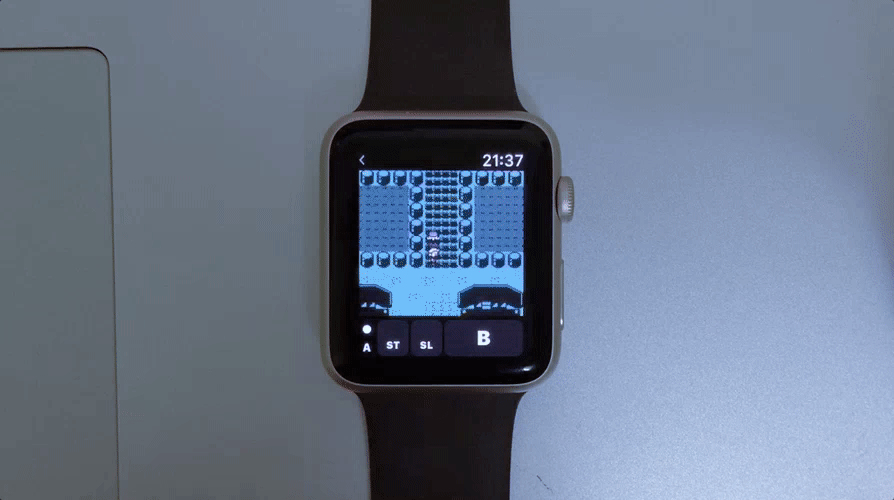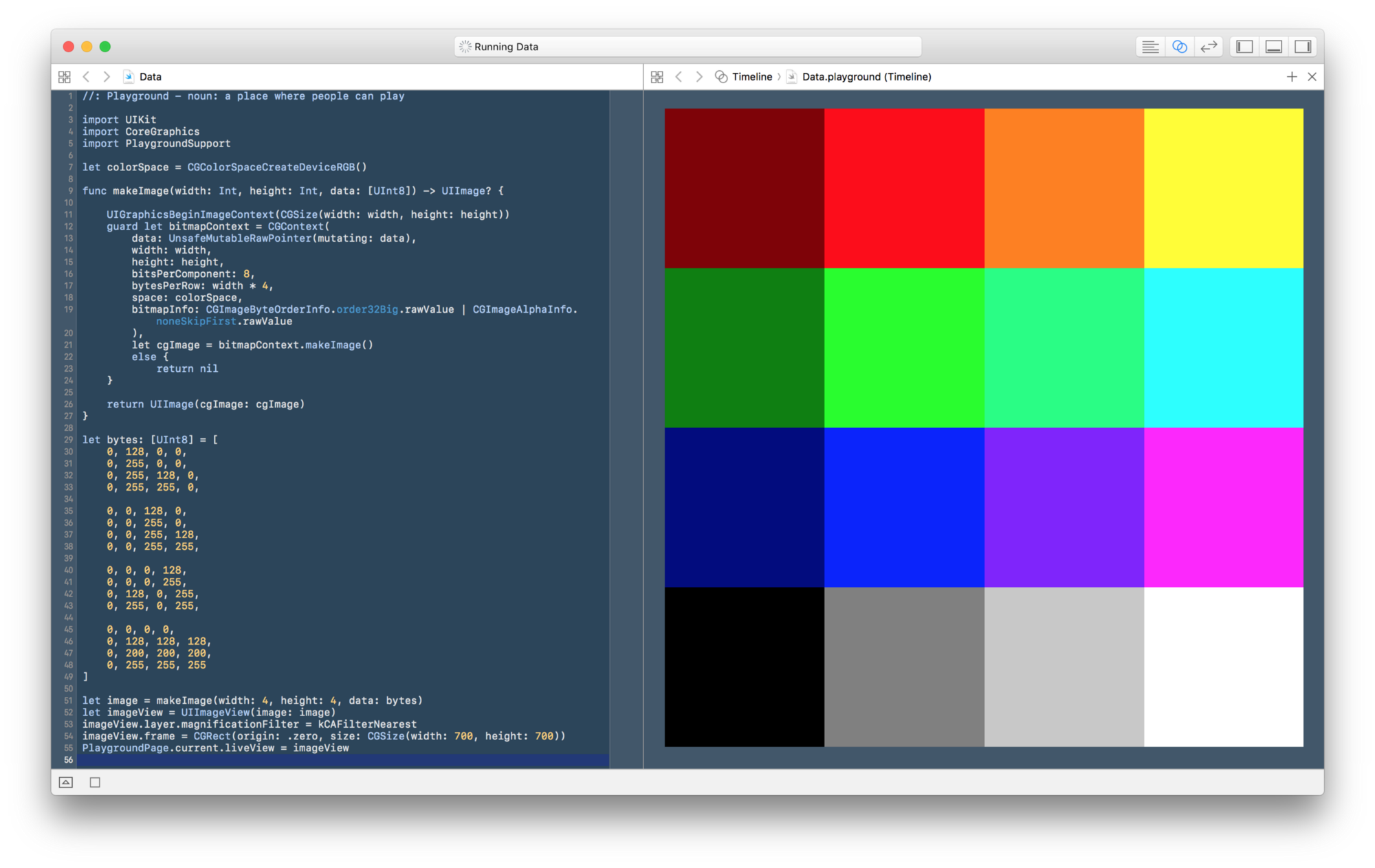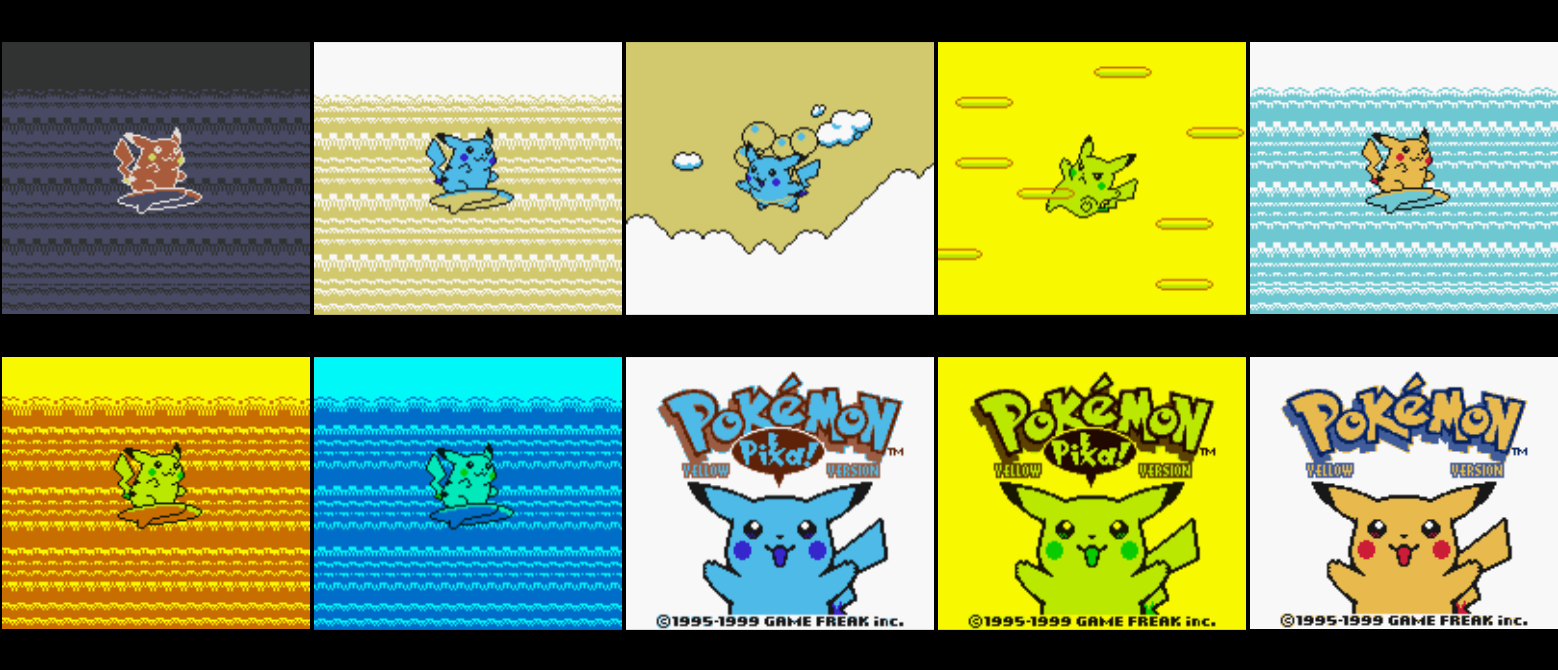View All Projects
GABRIEL O'FLAHERTY-CHAN
Toronto-based iOS developer at Shopify, with roots in product design and UX. Currently making a procedurally generated universe sandbox and posting semi-frequent gif updates here
Past Project
Making “Giovanni”, a Game Boy Emulator for the Apple Watch
Since getting an Apple Watch last fall, I’ve been disappointed by the lack of content. To help address this, I made my own game a few months ago (a 3D RPG), but obviously it still didn’t address the bigger issue. An idea I had was to port an existing catalog, and emulation made perfect sense.
The result is a surprisingly usable emulator which I’m calling Giovanni after the super-villain from my favourite Game Boy game, Pokemon Yellow. Ironically, I’ve only ever played the game on an emulator, as growing up I didn’t have access to the real deal. In a way, I feel this is my way of giving back to the community.
That feeling from accomplishing something you thought was too crazy to actually work is phenomenal. Here’s what Pokemon Yellow looks like on a Series 2 Apple watch:

One of the big challenges was to find the right balance between framerate and performance. As you can see, it’s a bit sluggish and unresponsive, but as a prototype, I think it answers the question of “is this possible”.

A Few Lessons Learned
For the sake of prototyping, I committed to doing as little unnecessary work as possible, so extending an existing emulator was my first approach. However as platform limitations and ubiquities surfaced, I discovered it was way less effort to just start from scratch and only pull in what I needed from open source projects.
My go-to emulator was Provenance, an open-source front-end for iOS. Having made contributions (albeit minor ones) in the past, I was semi-familiar with the codebase. My first approach was to have the watchOS extension ask iOS for a list of games names, then when a game was selected, download it and run locally. The first issue was with WatchConnectivity and Realm. Because Realm requires queries to be made on the main thread, that meant I wouldn’t be able to communicate with iOS unless the app was running, which wouldn’t be an ideal user experience. After investigating having querying Realm without WatchConnectivity and not having much luck, I realized Provenance offered a level of sophistication that wasn’t really necessary at this point.
Taking a step back, I realized Provenance (and others) are just thin layers on top of Gambatte —— where all the actual emulation was being done. After cloning the repo and looking at example code, I realized Gambatte was already extremely high-level, already offering support for loading ROMs, saving/loading, even GameShark.
Graphics on watchOS
Oh yeah, up until this point I was working under the fatal assumption that watchOS supported OpenGL or Metal (because of SceneKit). As it turns out, it doesn’t. I imagine if I did this investigation beforehand, it probably would’ve deterred me from even beginning. Nonetheless, I was too far in.
Recalling a Hacker News post about how some guys from Facebook got Doom running on watchOS not too long before, I discovered they were rendering to a UIImage using Core Graphics. Looking at what Gambatte was filling it’s video buffer with revealed that it too was just outputting pixel data.
I realized I didn’t know enough about feeding pixel data into a Core Graphics Context, so I created a Swift Playground to play around with creating images from a pixel buffer. As someone who learns best through trial and error (“what does changing this thing do?”), the ability to get immediate visual feedback was amazing.

Immediately after this exercise, I was finally able to get something on-screen, but the colors were all wrong. By adjusting the byte order and composition options (and with a little more trial and error), I was able to get what finally looked right:

For input, making a button on screen for every single input wasn’t desirable, so I took advantage of gestures and the Digital Crown. By allowing the user to pan on screen for directions, rotate the Digital Crown for up and down, and tap the screen for A, I was able to eliminate buttons until I was left with Select, Start, and B.


Touching the screen for movement isn’t a great interaction, but being able to use the Crown worked out a lot better than originally anticipated. Scrolling through a list of options is basically what the Crown was made for, and if the framerate was even slightly higher, the interaction could almost be better than a hardware D-pad.
I’m anticipating revisiting the project once watchOS4/next generation Apple Watches are out, just to see if there are any opportunities to get a higher framerate. Maybe Apple will even announce Metal for watchOS at WWDC this summer!
——
This project was a ton of fun to work on, and a great reminder that even though unknowns are scary, you really don’t know what’s possible without trying. The end result was way less effort and code than I originally anticipated.
I’m still deciding if it’s worth investing more time into improving performance, but for the sake of getting some feedback, I’ve open sourced everything on Github. If you’re interested in contributing feel free to submit a PR. For any thoughts or feedback, let me know on Twitter at @_gabrieloc or through email.
More work
"CHAOTIC ERA", an RTS game set inside a procedurally generated universe sandbox. One year in.
Exactly a year ago, I chose to once again try my hand at making a game, and over the course of the year, I’ve tweeted biweekly progress updates in gif format. Here are some of the highlights.
TV Plan - an AR app to help make TV purchase decisions
Building a Quadcopter Controller for iOS and Open-Sourcing the Internals
© 2019 GABRIEL O'FLAHERTY-CHAN
Contact